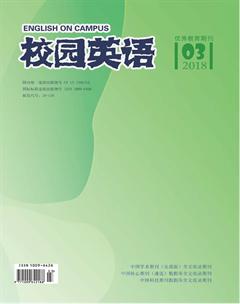SimilaritiesinEarlyChineseandWesternTranslationDiscourse
【Abstract】Although the traditional Chinese and western translation involve different language cultures, translation materials and ideological background, there are many similarities between the two. This paper will focus on the similarities in early Chinese and western translation discourse.
【Key words】early Chinese and western translation; similarities; translation discourse
【作者簡介】吴梦龄,女,汉族,福建省福州人,福州大学外国语学院,福州大学英语笔译专业硕士研究生,研究方向为英语翻译。
1. Early Chinese Translation Activities
Translation activities in China have existed for a long time which can date back to Han Dynasty. These activities were mainly centered in the translation of the Buddhist Sutra. Therefore, I think the process and changes in Buddhist Sutra translation can be also regarded as the whole translation activities of China in the early period.
Daoan, a famous Buddhist Sutra translator in Eastern Jin Dynasty, was one of the staunch supporters of literal translation. He proposed the idea of “Five Losses of Source Texts and Three Difficulties in Translation” to elaborate his point of view on regulatory translation. He claimed that Buddhist Sutra would lose its original meanings and spirits under five conditions. For example, original Buddhist Sutra usually expresses its meaning in a direct way due to the style and custom of Sanskrit.
Different from Daoan, another famous monk named Kumarajiva had a different idea on translation. Kumarajiva was an Indo-Chinese monk, which was helpful for him to handle both Chinese and Sanskrit. This advantage allowed him to feel freer than others in translating Buddhist Sutra. Whats more, its said that Kumarajiva begun reading Buddhist works when he was 5 and could make a speech when he was just 9 years old. Advantages of understandings of Buddhist Sutra and proficiency in two languages made Kumarajiva able to complete translation more easily. As a result, he didnt need to translate in a direct way.
2. Early Western Translation Activities
Same as the progress in China, western translation style also experienced the changes from direct translation to free translation and finally got combination of the two styles. Early western translation usually included translation of the Bible and Latin translation in ancient Roman period.
At the early time of Roman Empire, Romans conquered Greece and began to pay attention to Greek works. During that time, translators thought Greek works to be supreme. Therefore, they tried to translate them word by word. The only aim was to express the contents and forms of Greek works. Therefore, translators usually preferred direct translation which was similar to the early time China. The epilogue of Bible also threatened translators not to do any changes, saying “if you dare to add anything to this prophecy, you will receive punishment meted out by Gods.” Nevertheless, as conquerors, they didnt think Greek works to be supreme any more as time goes by. Greek works unfortunately werent as divine as Bible. As a result, many translators began to try free translation such as Cicero. Similarities of Early Translation Discourse.
Firstly, both Chinese and Western translation style experienced the progress from complete direct translation to free translation and finally they complemented both of them.
Secondly whether to completely obey meanings of original texts or not was always the core argument both in China and Western countries. Certainly, translators duty is to transfer contents of a language to another one. When translators tried to make some changes in translation activities, its evitable that sometimes misunderstandings will emerge. Nevertheless, different languages have its culture, styles, forms and aromas. From Kuramajivas translation, we can find “天見人人间天” is far more difficult to understand than “天人交接, 两得相见”. Yet, this translation could be criticized by Daoan because he thought that changes on Buddhist Sutra are profane.
Finally, both Chinese and western translators used metaphors to describe translations such as Dao Ans wine been watered and Kuramajivas chewing rice for others. Italian proverb also describes translators as slaveries who were always limited by translation texts.
Conclusion
Early Chinese and western translation and theories had many similarities in sense of styles changes, core arguments and describing. Even though due to the period and lack of experience, theories were not complete enough and had many defects. They had become the foundation for the development of translation later on.
References:
[1]Munday,J.Introducing Translation Studies:Theories and Application[M].London:Routledge,2012.

